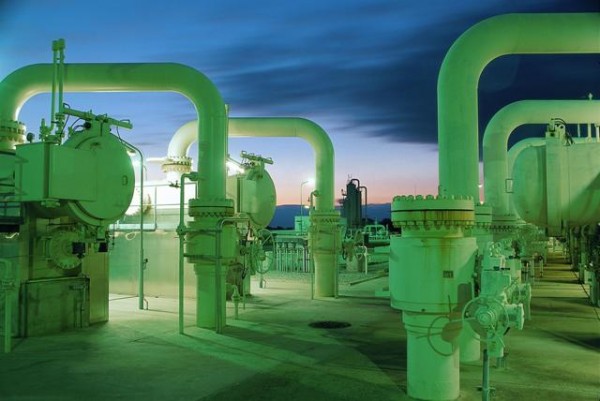
Two Non-Strategic Projects Compete With Nabucco Over Azerbaijani Gas
Publication: Eurasia Daily Monitor Volume: 8 Issue: 10
By:

A contest for priority access to Azerbaijani gas has developed between three gas transport and trading projects: Nabucco, the Interconnector Turkey-Greece-Italy (ITGI), and the Trans-Adriatic Pipeline (TAP, geographically a continuation of the Turkish pipeline route into Greece, heading for Italy). All three are component projects of the EU-planned Southern Corridor for Caspian and Middle Eastern gas to Europe. Before gas supplies from Turkmenistan and Iraq (both under discussion) materialize, Azerbaijan remains the only source of supply, and within certain limits. Nabucco, the ITGI, and TAP are all bidding for gas from the second phase of production at the Shah Deniz field in Azerbaijan. The producers’ consortium must soon select a buyer, or perhaps more than one. This situation has exacerbated the competition among the three possible buyers (EDM, January 12, 13).
The ITGI and TAP are gas business projects in their own right. When examined individually, outside the Southern Corridor’s context, they lack strategic value to Europe, and hardly even claim such a role. As Statoil’s senior vice-president responsible for gas, Rune Bjoernson, bluntly declared in Brussels recently, TAP is strictly for profit, and not interested in a European strategy. According to Bjoernson, Statoil had seriously considered selling Shah Deniz Phase Two gas to Russia, but yielded to Azerbaijan’s insistence to choose a European direction. TAP’s direction, however, is (like ITGI’s) a European fringe area with limited gas appetite, not the European heartland with its incomparably larger gas market, which Nabucco is targeting (European Energy Review, January 3).
TAP’s and ITGI’s planned volumes in the range of 10 billion cubic meters (bcm) per year are in themselves non-strategic. Nabucco’s planned annual volume of 31 bcm, recognized as strategic, is threatened by those smaller projects competing over Azerbaijani gas. Diverting Shah Deniz Phase Two production volumes to those smaller projects would block Nabucco’s first stage, delay its second stage indefinitely, and close the gateway for Turkmen gas to Europe. This is why the notion of developing the Southern Corridor through “building blocks,” starting with ITGI and TAP, lacks credibility.
Within the EU’s Southern Corridor strategy, significant niches are open for the ITGI and TAP. The sequencing, however, is decisive. Only Nabucco’s first stage can open the access for Central Asian and Middle Eastern gas through the Southern Corridor to Europe. Once this takes place, those volumes on top of Azerbaijani gas volumes could move through Nabucco, ITGI, and TAP. To make this happen, those 10 bcm per year on offer from Shah Deniz should be preserved undivided for Nabucco to start.
If launched outside a coherent Southern Corridor strategy, TAP and ITGI would almost negligibly contribute to the EU’s goal of reducing dependence on Russian gas. These two projects target mainly the Italian gas market, which is already saturated with supplies from well-diversified sources (Africa by pipeline, the Middle East through LNG, and Russia). TAP and ITGI volumes are mostly earmarked (pre-committed) for two specific companies, not the market at large (www.edison.it; www.egl.eu).
These two pipelines’ landfall points, in Italy’s far south, are peripheral to Europe. The two projects in their present form are irrelevant to alleviating the overdependence on Russian gas in Germany and Central-Eastern Europe.
Nabucco, however, aims specifically to reduce that heavy dependence in those countries. It is currently the sole diversification project for pipeline-delivered gas to the five EU countries represented in the Nabucco consortium. The pipeline’s terminus at Baumgarten near Vienna is located at the heart of a highly lucrative market, and well connected to Germany and Central European countries. Planned with multiple exit and entry points along its European route, Nabucco will also be connected with the Bulgaria-Greece, Bulgaria-Romania, Romania-Hungary, Croatia-Hungary, and Hungary-Slovakia interconnectors, as well as several existing links from Austria into Germany. In the latter country, RWE (a Nabucco consortium partner) and Bayerngas plan to procure gas via the Nabucco pipeline.
If TAP and/or ITGI divert Azerbaijani gas volumes away from Nabucco, stopping this larger project, Turkey would be adversely affected. The channel for Turkmen gas, and that from the Kurdish region of Iraq, to Europe via Turkey through Nabucco, would close in that case. This would undermine Turkey’s goal to become a bridge for Central Asian and Middle Eastern gas to Europe.
The planning for Nabucco envisages multiple sourcing of gas supplies for a large volume. It targets gas from Azerbaijan, Turkmenistan, and Iraq’s Kurdish region for Nabucco’s two consecutive stages. Multiple sourcing reflects Nabucco’s strategic role for diversification of supplies to Europe. At the same time, multiple sourcing significantly reduces physical and commercial risks to the overall project. The pipeline’s secure and uniform operating regime, from eastern Turkey to Baumgarten near Vienna, is designed to enhance investor confidence. Last year the European Investment Bank, the European Bank for Reconstruction and Development, and the International Finance Corporation issued a mandate letter envisaging up to 4 billion Euros ($5.34 billion) in credits for Nabucco construction work. This joint decision reflects both the strategic value and business confidence attached to the Nabucco project.




